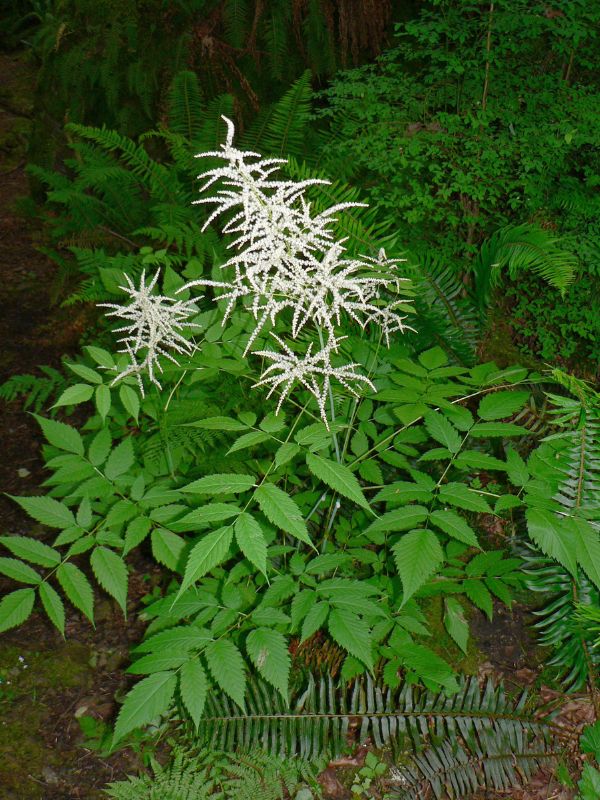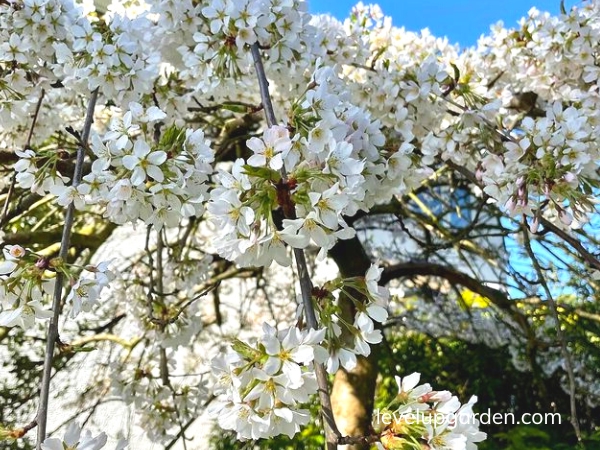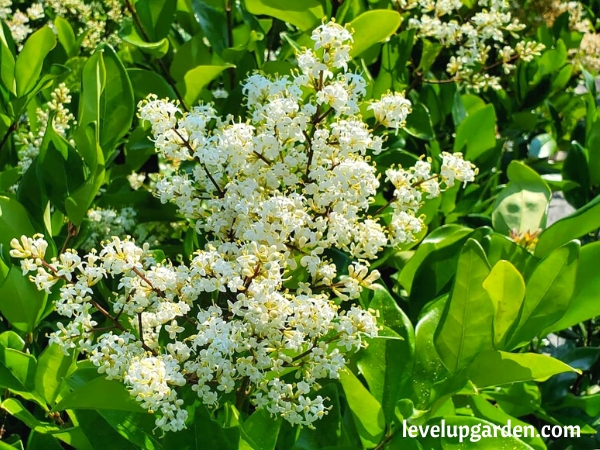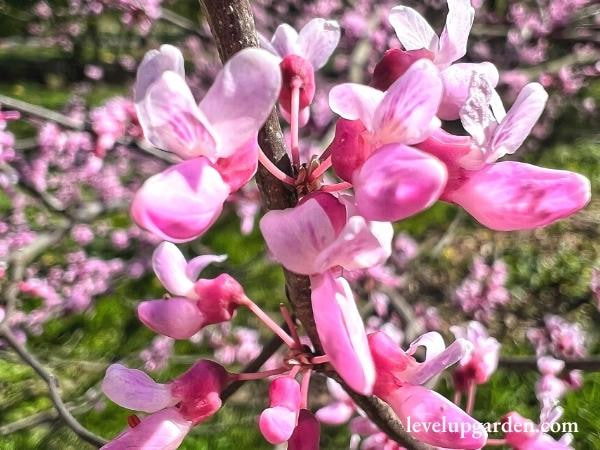Nellie R. Stevens holly is classified as Ilex x ‘Nellie R. Stevens’ Ilex is the genus name for holly. The plant is sometimes referred to informally by omitting the middle initial “R.” Nellie R. Stevens (Nellie R. Stevens) is commonly grown as a large shrub, quickly reaching a mature height of 15 to 25 feet and a width of 8 to 15 feet. Its dense conical to pyramidal form can be made into a small tree by removing lower branches. Read on to learn everything about the plant before you grow it in your garden.
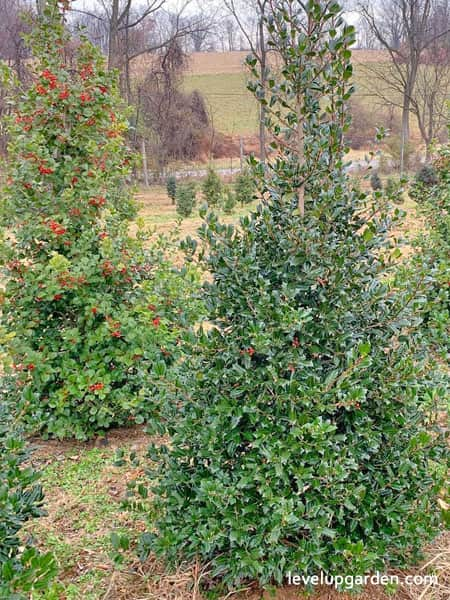
The small spring blooms are attractive to bees and other pollinators. Fruiting is strong and produces bright red berries in fall and winter that are food for a variety of birds. The glossy, dark green leaves are leathery and have spiny teeth.
I. Nellie Stevens Holly Profile – An Overview of the plant

| Common Name | Nellie R. Stevens Holly, Nellie Stevens Holly, Nelly, Stephens |
| Botanical Name | lIex x ‘Nellie R. Stevens’ |
| Plant Type | Evergreen shrub |
| Mature Height | 15-25 ft. |
| Mature Width | 5-10 ft. |
| Sunlight | Full-Partial |
| Growth Rate | Fast |
| Soil Type | Well-draining |
| Soil pH | 5.0-7.0 |
| Bloom Time | Spring |
| Hardiness Zones | 6-9 (USDA) |
| Native Area | North America |
| Toxicity | Toxic to humans and pets |
II. Nellie Stevens Holly Appearance
Nellie Stevens’ leaves are dark green and remain glossy throughout the year. The leaves have one to three sharp spines, white flowers, and small red berries 0.3 inches in diameter. On average, Nellie Stevens holly can grow 15 to 25 feet tall and 5 to 10 feet wide.
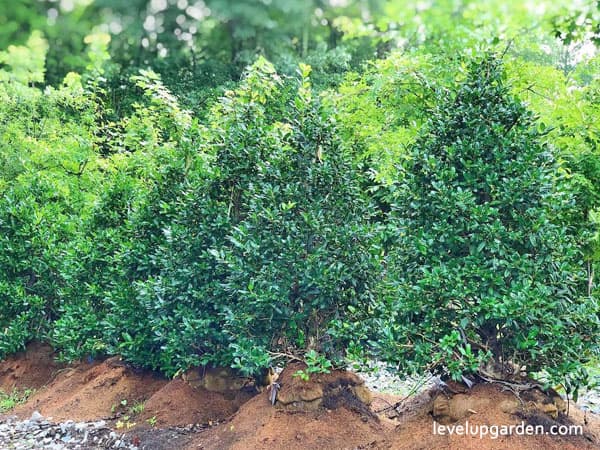
- Leaf: The glossy, dark green leaves are about 4 inches long and attractive throughout the year. Leaves alternate, simple, blister-like, oval, with 1-2 spines on each side. The tips of the leaves have terminal spines, and the number of spines often varies.
- Fruit: It produces many bright red 1/3″ spherical berries. Fruiting occurs in the fall and persists through winter. This plant is a clone of a female flower.
III. Nellie Stevens Holly Growing and Care Conditions
It grows well in sun to semi-shade but may need to be shielded from the afternoon sun to prevent leaf burn. Prefers well-drained, acidic, rich soils, but can tolerate a variety of soil types, including heavy clay. Wet areas should be avoided. Prune in winter to shape.
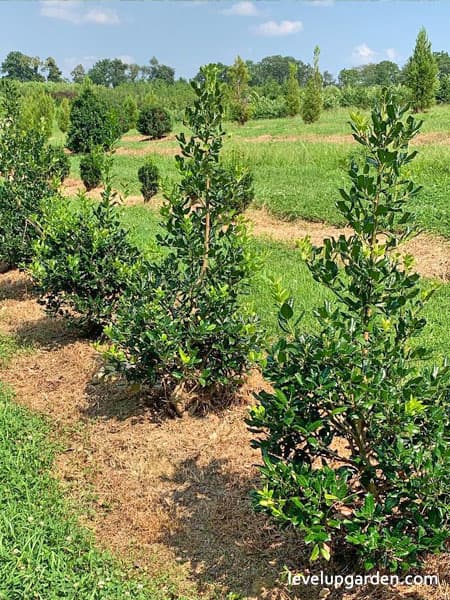
- Planting: For planting, choose a sunny or partially shaded location (4 to 8 hours of sun per day). Holly has “male” and “female” plants, but Nellie Stevens is a variety that reliably produces fruit without a “male” plant for pollination.
- Watering: Nellie Stevens is quite tolerant of drought. New trees should be watered twice a week for the first 2 months, once a week after 2 months, and once a week up to 6 months. By that time, the tree is firmly rooted and only needs additional water if the winter is windy and the sun is strong.
- Sun Exposure: Nellie R. Stevens holly grows well in full sun to partial shade.
- Fertilizer: Holi is fed with a special fertilizer designed for acid-loving plants in spring and fall. Hollytone is widely used as a fertilizer.
- Soil Requirements: Nellie R. Stevens prefers well-drained soils that are slightly acidic or neutral with a pH of 5.0 to 7.0. Holly can survive in weakly alkaline soils, heavy clay, dry sand, and most other types of soil.
- Temperature: Nellie R. Stevens holly can easily be grown in USDA plant hardiness zones 6-9. It prefers warmer climates but can tolerate frosty conditions.
- Pruning: Holly trees grow tall and shapely without much pruning. For a more rounded stock, cut off the top of the tree. This will cause the inside of the tree to sprout and the tree to swell. These trees can also be hedged or pruned to give them shape. Be sure to cut back to where the leaves are to hide the pruning cut.
- Pests and Diseases: Pests that can be a problem include holly leafroll insects, caecilian beetles, spider mites, and whiteflies. In terms of diseases, leaf spots and powdery mildew can be a problem. In high pH soils, chlorosis can occur.
IV. Uses
Use as a specimen plant or in barriers, hedges, or screen plantings for its dense, spiny foliage. Plant in a woodland garden or along a foundation. The showy red berries make winter fun and can add height to the back of a border. The abundance of red berries makes it a great winter garden accent.
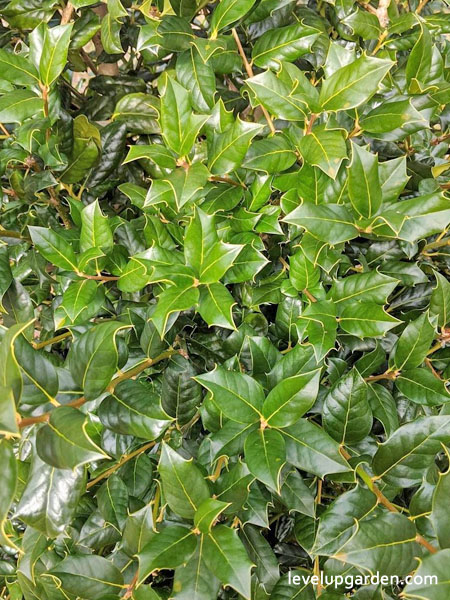
The impenetrable foliage of this holly provides a natural privacy hedge, easily blocking out neighbors and noise, and a few trees spaced 5 to 6 feet apart make a handsome, well-designed privacy hedge.
This holly is attractive because of its ability to retain its deep green foliage all year round. Nellie Stevens’ thick, glossy foliage makes it ideal for hedges.
It produces modest white flowers in the spring and bright red berries in the fall. The scarlet berries look great against the dark green foliage, and we encourage you to cut whole branches and display them at Christmas.
V. Should you buy a Nellie Stevens Holly? Is this the tree for your garden?
Nellie Stevens’ popularity has skyrocketed. Here’s why. First, it is ideal as a hedge and as privacy protection, especially because it grows up to three feet each year.
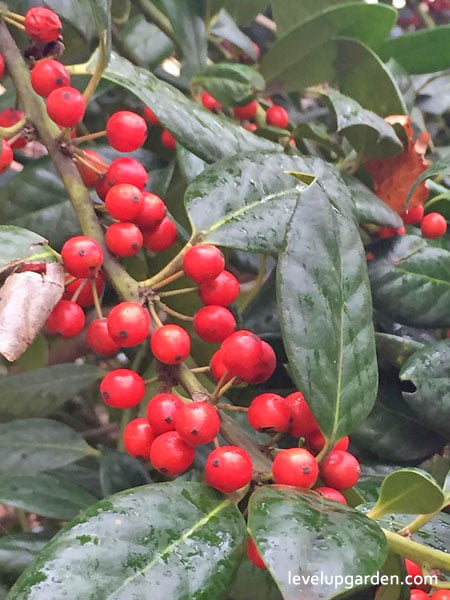
Furthermore, it grows well when left alone. It can grow in the sun or partial shade, even if you are not a fan of growing plants. And unlike other hedges that die in summer heat or drought, this holly maintains its deep green color all year round.
Plant Nellie Stevens holly 5 to 6 feet apart for a living wall with no holes or gaps for complete privacy. You can grow it as a dense pyramidal tree 15 to 25 feet tall or prune it into a tall box hedge.
It is rapidly gaining popularity among landscapers because it creates a green wall simply by planting it and is easy to care for.
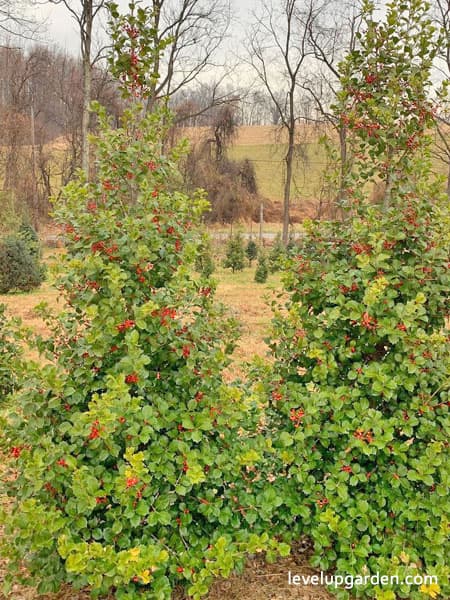
They are also popular as accent trees on home corners and on patios. Simply plant it and it will grow up to 3 feet a year. Simply trim to your desired height.
This holly grows well in urban areas where air pollution is a problem for many trees and shrubs. It is perfect for small areas of soil along sidewalks and streets.
Bird watchers will enjoy the variety of birds this berry attracts, including robins, cedar waxwings, and mockingbirds. As an added bonus, deer are said to stay away from Nellie Stevens Holly.
VI. FAQs
How fast does Nellie Stevens Holly grow?
Nellie Stevens Holly is considered a fast-growing tree species, regardless of its proximity to other tree species, and can grow as much as 3 feet per year. This is much higher than other trees.
How tall do Nellie Stevens Hollies grow?
Nellie Stevens’ holly can grow 15 to 25 feet tall and 5 to 10 feet wide.
How far from the fence should I plant Nellie Stevens holly?
Nellie R. Stevens Holly grows very tall and wide. Proper spacing is important. Plant on centers spaced 5 to 6 feet apart to create a dense hedge.
